#Bat fossil
Explore tagged Tumblr posts
Text
🦇Museum Curator of Mammalogy Angelo Soto-Centeno shares updates from his recent expedition to Puerto Rico, where he and a team of local and international researchers led a paleontological excavation and bat diversity inventory. The aim of this work was to explore new locations to examine the present, or living, and past, or fossil, communities of bats and identify species that have become extinct in recent times.
They found three species of extinct bats that were lost in the last 4,000 to 1,600 years—including insectivore and nectarivore bats!
#science#amnh#museum#fossil#nature#natural history#animals#fact of the day#did you know#bats#ghost faced bat#mammalogy#stem#research#conservation#biodiversity#paleontology
454 notes
·
View notes
Text
Fossil Friday : Icaronycteris
Today's spotlight fossil is Icaronycteris, the earliest known bat.
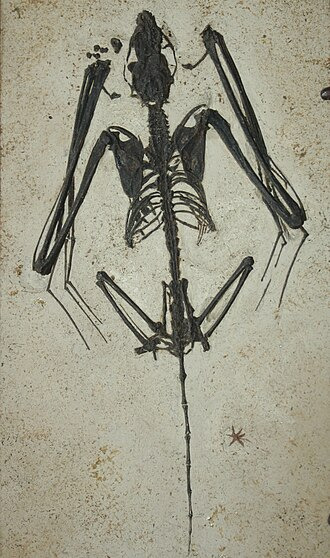
It was found in the Green River Formation lagerstatten of the early Eocene making it about 52.2 million years old. It was a small bat at only 14 cm long with a 37 cm wingspan.

It was very similar to modern bats with some primitive traits like a long tail unattached to skin membranes.
Like modern bats, the anatomy suggests that it hung upside down to sleep and it was one of the first echolocating bats.
Now you know about the earliest bat. Tune in next week for this month's new topic in mineralogy! Fossilize you later!

27 notes
·
View notes
Text

this is one of the oldest known bat fossils. it was found in wyoming and dates back over 52 million years. when i saw this in a museum, i didn’t even need to read the sign because i know this fossil by heart.
i was so excited to see it in real life that i jumped up and down and the other people in the museum looked at me weird 🙃 it was worth it :) besides, they are the weird ones for not being as excited as me in a museum full of brilliant things
#cute bats#bats#i love bats#batfam#chiroptera#fossils#paleontology#goth#spooky#spooktober#count dracula
166 notes
·
View notes
Text
Animated Megatron’s god-tier Yes-And game slays me every time. No wonder this guy has successfully Warlord-ed his way through millenia, literally anything can happen to him and he just spin-doctor’s his way to victory
#convincing sumdac to rebuild him cuz he’s the autobots special buddy? easy#he is figuratively batting his eyelashes at Sumdac and it is WORKING#getting the Dinobots to go on a rampage to avenge their fossil brethren? done#that ones extra funny because his logic was insane and only worked because grimlock is also insane#rocking up to your faction after fifty years of being a head and immediately taking charge? piece of cake#transformers: animated#tfa Megatron#transformers#this Megatron is a bard-barian and his charisma is Maxed Out
17 notes
·
View notes
Text
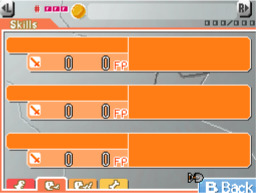


hello again fossil fighters gang, this time i've remade the FF1 skills page! once again in various sizes
#it hails#my art#fossil fighters#once again the first image is a 1:1 trace but luckily the main page being done made this SO much quicker#i do wish i'd made my canvas the right size right off the bat because it does get blurry#tried to minimize that with the others
19 notes
·
View notes
Text





A small series of knit sweaters in various themes that I will be launching on Kickstarter!🏔���
It would mean a lot if you could share your thoughts on the designs ! 🖤🖤
#small artist#small business#art#merch design#knit#sweater#ugly sweater#kickstarter#fossils#ufo#trans artist#trans business#skeleton#bats#gothic#dark illustration#goth#vampire aesthetic#horror art
43 notes
·
View notes
Text
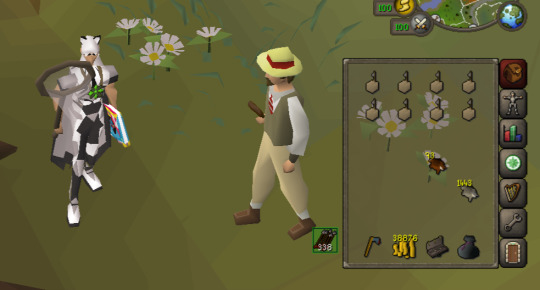

In case you were wondering
Ultimate iron btw 😏
#prolly just gonna release the chins XD#we just like them so much more than lizards okay#and we need either like 500k we don't have to buy a cannon or 83 Hunter for dragon bones so we can do watchtower at least to skavid caves#so we can poison dynamite#or just buy a cannon and try spawn hitting#point is#we need bat bones to get to fossil Island#and they are in the bat
14 notes
·
View notes
Text

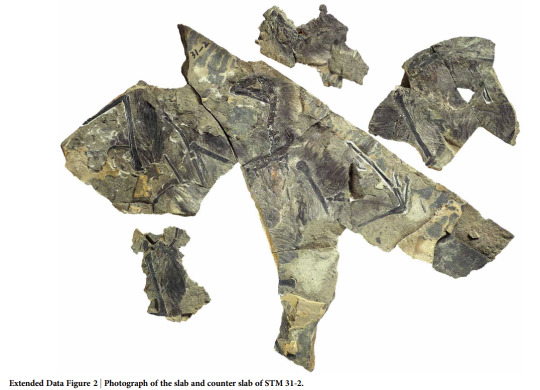
Happy Fossil Friday!
Who: Yi qi
name meaning: "Wing" "Strange" = "Strange wing"
pronunciation: Yee chee
What: a scansoriopterygid (climbing/gliding maniraptoran dinosaurs) theropod
When: Middle-Upper Jurassic
Where: Tiaojishan Formation in the Hebei Province in China
Fun fact!: Yi qi is the shortest binomial of any extinct animal discovered so far, sharing this status (ironically) with the extant Ia io, the great evening bat.
P.F. (personal flex) Fun fact!: One of the authors on the original paper describing the discovery of Yi qi was my undergraduate thesis supervisor.
Why are they cool?: When you think of birds you think feathers and Yi qi certain had those, but what sets this funky little lad apart from other maniraptorians of this time were the long rods of bone protruding from its wrists that supported membranous tissue not unlike the wings of a bat.
Here is a link to the original paper describing Yi qi if anyone is interested in learning more!
And just for fun cause she's super cool, here is a link to another of the paper's famous authers, Jingmai O'Connor's website, the punk rock palaeontologist!
Image Credits: (Left: Emily Willoughby, Right: Figure 2. Xu, Xing, Xiaoting Zheng, Corwin Sullivan, Xiaoli Wang, Lida Xing, Yan Wang, Xiaomei Zhang, Jingmai K. O’Connor, Fucheng Zhang, and Yanhong Pan. "A bizarre Jurassic maniraptoran theropod with preserved evidence of membranous wings." Nature 521, no. 7550 (2015): 70-73.)
#palaeontology#paleontology#fossil friday#fossils#paleo#palaeoart#paleoart#yi qi#china#jingmai oconnor#birds#theropod#bat#jurassic
28 notes
·
View notes
Text
I had a legitimately interesting dream that featured Objectified, and it featured some other interesting stuff too, but I might keep that in for now. Basically, it looked like an arc where Mushroom and Dynamite got seperated, and Dynamite was found and is being trained by a group of objects, one of them I remember being a sunflower. (Sunny...? Except I think the sunflower was supposed to be a girl.) Anyways, in what seemed like a sweet arc, Dynamite seemed to be like, forming a family-like bond with the objects, (specifically the sunflower,) and I think it might've been a flashback actually, or something. Anyways, Ebb and Flow was out, and I couldn't help but skim through. So, Fossil and Painkiller were out in the cold, and they were talking and sort of started to argue, and Fossil started to get really angry and yell at Painkiller. However, she stopped, realizing that she was acting similar to how she did before, like back in Do No Harm, with even a similar facial expression to when they were yelling at them back in that episode. They calmed down, seeming to look sort of like they were thinking "Oh..." when they realized they were yelling at them again. The two then proceeded to walk on a bit more quiet yet calm. Anyways, they ended up finding themself in a volcano/magma/lava/rock-like area, where the pillow Citrus and Spool encountered flew in, carrying the SAME SUNFLOWER that Dynamite bonded with, who seemed to still be alive, screaming, and then dropped her. I think she fell unconscious after hitting the ground, but anyways, there, it ended off with a legitimately awesome cliffhanger where an Assimilated appeared, as Fossil and Painkiller looked on in shock.
#Object Show#Object Comic#Objectified#Ebb and Flow#Devil's tooth mushroom#Praying Mantis#Mushroom#Eden#Jaguar#Dynamite#Max#Sunny#Alligator#Fossil#Era#Painkiller#Do No Harm#Bodypillow#Fruit Bat#Citrus#Spool#Clark
4 notes
·
View notes
Text
Me: Hey wikipedia what's the closest living relative to bats?
Wikipedia: *sniffling* idk... kity... ouppy maybe....
Me: Wikipedia work with me here
Wikipedia: *tearing up, lip quivering* P-pangolin...
Me: Wikipedia you can do this :(
Wikipedia: *breaking down in tears* Horsey?!
#so the answer is 'no one knows lmao'#bats: not even once#they pretty much specialized to be Little Flying Bastards WAAAAY early in the timeline#so far back that they don't really have any close relatives because all close relatives are just. other bats#and fossils will just show 'this is bat' but there isn't anything that's easily determined as 'this is a pre-bat ancestor'#so they're maybe possibly VERY VERY distant cousins to carnivores and pangolins and horses#but who knows! not wikipedia
9 notes
·
View notes
Text
Rock Candy cuts my mouth up when I eat it, but I want some.
#too bad it's so hard to find#last time i had some was when i went to a cave system#they had lots in the gift shop#the cave was full of crystals#the gift shop also sold fossils and dead bats#shiny rocks and geodes#it's cool#but it's also a 3 hour drive
2 notes
·
View notes
Text

Good start on a new embroidery project! Made the pattern myself from scratch, my biggest project yet. All for my favourite niece, I hope she's gonna like the finale product. Time shall tell!
Enjoy!
The Roan RPG Project ScreeCon Server on Discord Leave a Tip on Ko-Fi
12 notes
·
View notes
Text








I went to the Chicago field museum!!! It was so cool I honestly was so fucking excited
4 notes
·
View notes
Text
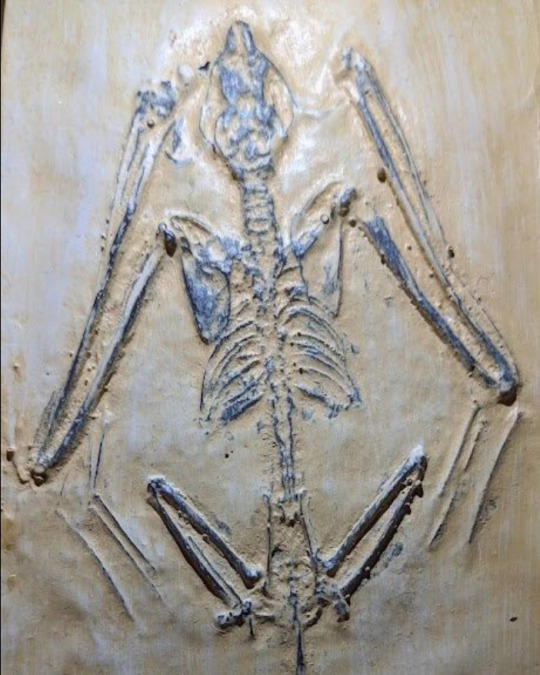
Icaronycteris index (extinct), via batconservationtrust
5 notes
·
View notes
Photo
Fish

An amazing recent fossil discovery: a whole school of fish! A single slab of limestone from the Green River Formation in North America contained 259 fish of the extinct Erismatopterus levatus species. They lived between 56 to 34 million years ago.
The discovery is exciting because it is a rare case of fossils demonstrating behavior – in this case, that fish have gathered into shoals for millions of years.
#Green river stay winning#Pretty sure that has one of the oldest bat fossils#And one of the oldest primate fossils#Primates are suspected to have evolved in NA#Bats we have no clue they show up on opposite sides of the world at almost the same time#And are already strong flyers#So who knows#Fish
27K notes
·
View notes
Text
Vertebrate 3D scan project opens collections to all - Technology Org
New Post has been published on https://thedigitalinsider.com/vertebrate-3d-scan-project-opens-collections-to-all-technology-org/
Vertebrate 3D scan project opens collections to all - Technology Org
A venture to digitize vertebrate collections in museums and make them freely available online for anyone to access has reached a milestone. The project has created 3D CT scans of some 13,000 specimens, representing more than half the genera of birds, amphibians, reptiles, fishes and mammals.
Lateral view of piranha (Serrasalmus iridopsis); collected in South America, by C. F. Hartt who died in 1878. The exact year of collection is not known, but was likely in the latter half of the 19th century.
The project, the oVert (openVertebrate) Thematic Collection Network, has just wrapped up a four-year, $2.5 million National Science Foundation grant, with the efforts to date described in a paper published in BioScience.
The Cornell Museum of Vertebrates, one of 18 institutions taking part in oVert, has uploaded roughly 500 CT scans of specimens from its collections. The museum holds approximately 1.3 million fish specimens, 27,000 reptiles and amphibians (collectively called herps), 57,000 birds and 23,000 mammal specimens.
“Not everyone is interested in making a trip to a museum, so by digitizing specimens, placing everything up on a website and making it free, anyone who wants to access it can without having to leave the house, which allows for much more equitable access,” said Casey Dillman, curator of fishes and herps at the Cornell Museum of Vertebrates in the College of Agriculture and Life Sciences, and a co-author of the Bioscience paper.
So far, users have included artists, high school and college students, educators and scientists.
oVert allows the natural history collections that are represented to be used in collaborative ways, such as in classrooms. The format has made it simpler to compare anatomies of different species.
“You can do so many things,” Dillman said. “You can compare specimens and look at the evolution of limbs, or wings in birds and bats, or gills in fishes.”
Views of a juvenile pied-billed grebe (Podilymbus podiceps) that perished swallowing a fish.
One limitation of the platform is that each specimen dataset can be 2 to 3 gigabytes in size, requiring users to have access to a computer with an expensive graphics processor to visualize the data. “Not everyone’s laptop can do that,” Dillman said.
Dorsal view of a shovelnose sturgeon (Scaphirhynchus platorynchus); one of the three species of shovelnose sturgeon in the U.S. The other two species are federally endangered. This specimen was collected in 1909 in Emanuel Creek at Springfield, South Dakota. Image credit: Cornell University Museum of Vertebrates
The idea behind the grant was to CT scan one species of every genus of vertebrate, thereby building an online digital library of each organism’s appearance – its phenotype, or observable characteristics – with respect to the skeletal anatomy. While most of the images are skeletons, some were stained with a special solution to provide better contrast and visualize soft tissues, such as skin and muscles. The scanners use X-rays, which can be set as weak as a medical X-ray for soft tissue, or strong enough to view through rocks and fossils.
Museum catalog numbers included with each image link to the institutional database where the specimen originated. Database entries include when, where and by whom a specimen was collected.
Lateral view of a sargassum fish (Histrio histrio); collected from the south shore of Boca Chica Bay in Monroe County, Florida, in 1979. Image credit: Cornell University Museum of Vertebrates
In many ways, the oVert project is just getting started, Dillman said. “Thirteen thousand species isn’t even scratching the surface of vertebrate diversity,” he said.
For example, there are more than 36,000 species of fishes alone; one species per genus is a good start, he said, but it will take time and additional funds to represent the great depth of diversity.
“If you think about some of the fish lineages in North America, there might be 200 species within a genus,” he said.
Each round of funding will allow the teams to continue representing more genera and adding more species from each genus.
The grant’s principal investigator was David Blackburn, curator of herpetology at the Florida Museum of Natural History in Gainesville, Florida.
Source: Cornell University
You can offer your link to a page which is relevant to the topic of this post.
#000#3d#3D scanning#agriculture#America#amphibians#Anatomy#artists#bats#birds#Building#collaborative#Collections#college#computer#data#Database#digital library#diversity#Evolution#fish#Fossils#Foundation#Funding#graphics#History#images#it#laptop#life
0 notes